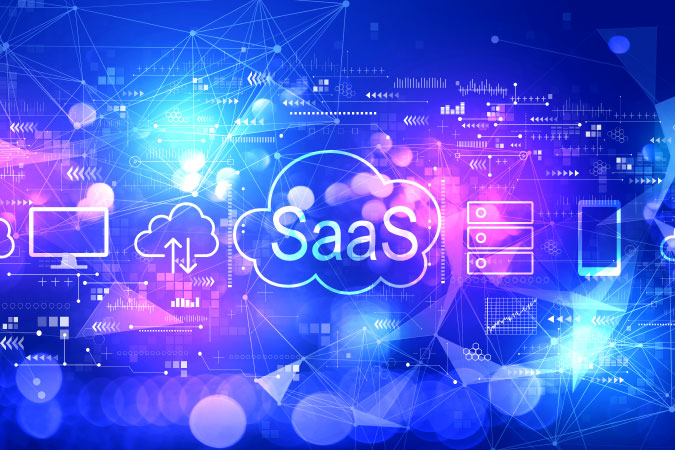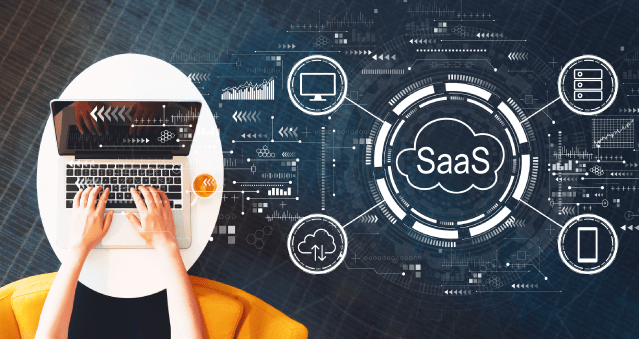Whether a small and medium-sized business (SMB) or large enterprise, revenue is at the very center of your business performance. Many companies struggle to determine when revenue can/should be recognized. Your ability to accurately recognize revenue is what keeps your SaaS business healthy. Not to be minimized or put on the back burner, but the insights provided by SaaS revenue recognition are key to knowing your financial performance.
A key to answering when revenue can be recognized is to remember that cash isn’t revenue. Regardless of when payment is received, you can’t recognize it as revenue until the products and/or services purchased have been delivered and accepted. This is where understanding Accounting Standards Codification 606 (ASC 606) and complying with the standard is essential.
ASC 606 is a framework that falls within the generally accepted accounting principles (GAAP). It identifies specific conditions in which revenue is recognized and determines how to account for it. It’s the process of recording earned revenue and recognizing it appropriately. Sounds simple enough, right?
For one-time purchases like buying a software package that is immediately installed, the process of recognizing revenue is pretty straightforward. However, for software-as-a-service (SaaS) organizations that bill on a recurring basis whether monthly, quarterly, or annually, recognizing revenue is much more complicated.
This blog explores the unique considerations of revenue recognition for SaaS companies, SaaS revenue recognition metrics, what ASC 606 means for SaaS companies, and the ASC 606 five-step compliance model.
The Ins and Outs of SaaS Revenue Recognition
It may be tempting to recognize revenue as soon as cash is received, however doing this can result in serious consequences. Since revenue recognition has a direct impact on a company’s financials and reporting, there are severe penalties for ASC 606 non-compliance. For instance, when revenues aren’t properly recorded and recognized, the business can face legal issues, fines, loss of jobs, and even jail time. Given the potential repercussions of non-compliance, the importance of accurately recognizing revenue cannot be overemphasized.
Staying in compliance helps build trust with stakeholders, ensures there are no discrepancies between reported earnings and cash flow, and provides the accurate data needed to make informed pricing strategy decisions. ASC 606 compliance ensures that your company complies to IPO regulatory requirements. It makes quoting consistent, reduces contract errors, and ensures accurate data, making your company appealing to investors.
Revenue Recognition Examples
A critical accounting principle, accurate revenue recognition is essential to the financial health of the business. Let’s look at a couple of revenue recognition examples.
- Example 1: You sold an annual software contract to a new customer for $24,000, receiving full payment immediately. Can you recognize the $24,000 as soon as it is received?
- Example 2: A current customer extended their annual contract of $24,000, paying $2,000 per month. Can the $24,000 be recognized immediately?
The answer to both of these scenarios is no. In example 1, although you have the $24,000 in your account, you haven’t yet earned the total amount. You are, however, able to recognize $2,000 of revenue each month until the contract expires.
Example 2 is less convoluted since you’re receiving $2,000 per month from the customer. By fulfilling your contractual obligations each month, you’re able to recognize the amount paid on a monthly basis – until the conclusion of the contract.
These examples are just the tip of the iceberg regarding challenges SaaS companies face when recognizing revenue. And while current revenue recognition guidelines apply the same accounting model across all industries and business models, SaaS face unique revenue recognition considerations.
Why SaaS Revenue Recognition is Unique
Saying that SaaS revenue recognition poses unique complications and challenges is an understatement. Most SaaS businesses offer different subscription plans and pricing models such as flat rate, basic tiered, per-user/per-unit, freemium, usage-based, hybrid billing, dynamic billing, along with nearly endless combinations. Additionally, there are other SaaS considerations that need to be taken into consideration, such as:
- Subscription cancellations before the contractual end date
- Upgrades from basic plans to top-tier plans
- Downgrades from top-tier plans to basic plans
- Services provided
- Inability to collect money owed
For each of the above situations, revenue recognition needs to be appropriately adjusted. We’ll explore each of these scenarios to demonstrate how the event affects revenue recognition.
Subscription cancellations prior to the contractual end date
How you determine revenue recognition adjustments depends on the contract between the company and the customer. If the contract states that refunds will be provided for cancellations prior to the end of the contract, you’ll recognize revenue up to and including the last month prior to the cancellation date. The remaining funds, if paid in advance, are credited back to the customer.
However, if the contract stipulates that early cancellations are not refunded, you can recognize the deferred balance amount as revenue the first month of the cancellation. And in this case, no credit is issued to the customer.
Upgrades from basic plans to top-tier plans
We’ll use an example to illustrate how plan upgrades affect SaaS revenue recognition. Let’s assume that mid-way through the contract year, say June 15th, your client requests a plan upgrade that would take their annual payment from $12,000 to $24,000. Revenue recognition for June would be $1,500 ($500 for the first 15 days of June and $1,000 for the last 15 days of June). Revenue recognition for July – December will be $2,000 a month.
Downgrades from top-tier plans to basic plans
We’ll now reverse the above scenario for plan downgrades. Using the same criteria, revenue recognition for June would be $1,500 ($1,000 for the first 15 days of June and $500 for the last 15 days of June). Revenue recognition for July – December will be $1,000 a month.
Services provided
When you can recognize revenue from services varies on the service provided. Let’s look at two common types of services.
- Implementation services: There are two scenarios that determine when you can recognize revenue from implementation services. If the customer chooses to outsource the service to your company, it’s considered separate from the software purchase. Therefore it’s recorded as revenue at the time that the service is completed. On the other hand, if the service isn’t distinct from the software, revenue needs to be recognized over time.
- Professional services: Similar to implementation services, you need to determine if the training, custom development, or other professional services are separate from the software subscription. For example, are the services sold on a stand-alone basis or can the customer purchase the services from a third party? If either of these conditions are true, you will need to recognize revenue when the service is complete. When professional services are provided over time, revenue is recognized based on contractual milestones.
Inability to collect money owed
According to the GAAP, when payment is uncollectable, you need to report it as a bad debt. If a portion of the invoice is recognized, the uncollectable money owed is written off as a bad debt.
While this isn’t an exhaustive list, it gives you an idea of the complexities SaaS businesses encounter in recognizing revenue. In an effort to simplify and standardize revenue recognition, the Financial Accounting Standard’s Board (FASB) and the International Accounting Standards Board (IASB) jointly developed ASC 606, which provides a five-step model for revenue recognition.
The Five Steps of Revenue Recognition
Essentially, ASC 606 provides businesses with a framework that outlines when revenue can be recognized and the amount of recognizable revenue. The process consists of the following five steps:
- Identify the contract: This step involves agreeing on the terms of the contract (written or verbal), and includes delivery and obligations, as well as consequences if obligations aren’t met. Complexities specific to SaaS organizations include deciding whether contractual upgrades or downgrades fall within contractual modifications or if a new contract is required.
- Identify the performance obligations: This describes the specific products and services, as well as performance and deliverable obligations. It’s important to note that products and services are considered distinct if customers can benefit from them separately.
- Determine the transaction price: Not just about the price of the products and services, it needs to include other factors such as discounts, return policies, additional fees, etc. Complications – especially for SaaS businesses – can arise if recurring discounts, rebates, or incentives are offered.
- Allocate the transaction price: Using the transaction price determined in step number 3, allocate the transaction price across the contract’s distinct performance obligations. It’s what the customer agrees to pay for the products and services purchased.
- Recognize revenue: This step can only take place once the transaction is complete and contractual obligations fulfilled. However, it’s important to remember that revenue can be recognized at a single point in time or over a period of time, depending on when control is transferred to the customer.
As you can see, SaaS revenue recognition can be complicated. Even in the most straightforward revenue recognition scenarios, adherence to ASC 606 can be tricky. Complying with ASC 606 requires companies to align their systems and accounting processes with the guidelines set forth.
Simplify SaaS Revenue Recognition
While you want and need to recognize revenue as soon as possible, ASC 606 is a complex standard that requires the strictest compliance. If you’re handling revenue recognition manually or relying on outdated systems, you may be putting yourself and your company at risk for non-compliance. To ensure compliance and lessen manual, error-prone effort, you need to have the right tools in place. With the right system, you’re able to reduce errors, automatically calculate revenue allocated to performance obligations, and speed the close process.
BillingPlatform provides intelligent revenue recognition software that enables you to streamline revenue management to allocate, reconcile, monitor, and recognize revenue for any pricing model, billing approach, or promotional offer – while staying compliant with ASC 606 and IFRS 15. With us, you’re able to audit-proof your revenue recognition processes, manage revenue contracts, assign financial transactions and execute revenue recognition in real time – as events happen, manage revenue recognition across multiple subsidiaries and geographies, adhere to strict compliance regulations, and much more.
Are you ready to simplify your revenue recognition processes? Let our team of experts help you along the way.



